Dustless Tile Removal – Why Choose Dustless Tile Removal?
Removing tile from a home or business is a messy and time-consuming job. It also generates a lot of concrete dust that can spread around the house for weeks or months after the job is complete.
This dust is a major health hazard and it is known to cause silicosis, COPD, and lung cancer. It can be detrimental to your family and pets as well.
Health and Safety
Whether you are a residential homeowner or a contractor, you want to protect your interior surfaces from damage. The dust created by traditional tile removal is harmful to everyone who breathes in it.
Respirable crystalline silica dust is carcinogenic and poses serious health risks to your family. It can trigger respiratory diseases and worsen existing conditions, such as asthma or allergies.
If you have a family member or someone in your household who has respiratory issues, you should look for a company that uses an advanced dust-free tile removal system.
This type of tiling is 3X faster than traditional methods and captures all the dust produced by the process. It will also leave your slabs flatter and ready for installation.
Some contractors use ride-on floor strippers, negative air machines along with fans, water hoses and plastic sheets to try to control the amount of dust they create during the removal. This method damages walls, cupboards and soft concrete subfloors – typically costing thousands of dollars in repairs before the new flooring can be installed.
Reduced Costs
Compared to traditional tile removal, dustless tile removal is much less expensive. It is also a safer and healthier option for you and your family.
In traditional tile removal, crystalline silica dust is released into the air when the flooring is removed. When inhaled, it can lead to serious respiratory problems like lung cancer, silicosis, and COPD.
With a dust free tile removal process, every pound of dust is captured, eliminating the threat of inhalation. Moreover, the floor is prepared better for the installation process because of this.
Another benefit to dustless tile removal is that it doesn’t require deep cleaning services. With traditional tile removal, the dust from the floor will remain in your home for weeks and months after it has been removed.
Less Damage to Slabs
With traditional tile removal methods, the slabs can get chipped or smashed which increases the overall time spent on the project. It also requires more prepping to correct the damage so that you can install your new floors.
With a dust free tile removal process, your concrete slabs will be in the clear as you start installing your new floor. Often, the best way to do this is by removing old tiles and mortar first before starting on the floor.
One of the coolest things about dustless tile removal is that you’ll be able to enjoy your newly installed floor without all the grit and grime. That is, of course, if your contractor uses the right equipment and processes! The best way to find out is by asking the right questions and checking out their video demonstrations. They should also have a good looking website and social media presence to boot. The real trick is finding a company that has a reputation for customer satisfaction.
Less Mess
Removing old tile flooring is a messy and laborious job. It can also be a health hazard because of the dust created during the process.
Contractors will attempt to minimize the spread of dust by using plastic wrap. However, even if the tape is effective, the dust will still get everywhere – covering your walls, furniture and counters.
It can clog up air vents and ductwork, causing a lot of extra work for you and your HVAC system. Additionally, it is harmful to your health, as it contains crystalline silica that can lead to silicosis.
Thankfully, there is a more efficient way to remove your old floor tiles without creating a big mess. This method is called dustless tile removal and it is safer for you, your home and your contractor.



